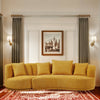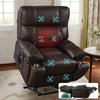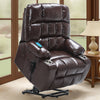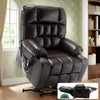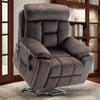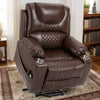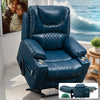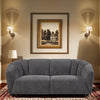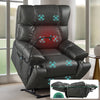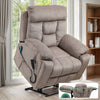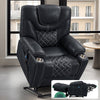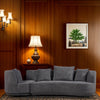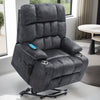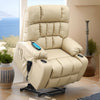The Evolution of Modular Furniture in the United States
The Beginnings of Modular Furniture Design
Modular furniture design in the US began in the mid-20th century. It was a response to changing lifestyles and smaller living spaces. Designers wanted to create flexible, adaptable furniture. The goal was to maximize space and functionality.

Early modular designs were simple and practical. They often featured clean lines and minimal ornamentation. These pieces could be easily rearranged or combined. This allowed homeowners to customize their living spaces.
The concept quickly gained popularity. It appealed to those seeking modern, efficient solutions for their homes. As the idea grew, so did the variety of modular furniture options available.
Advancements in Modular Technology
Over time, modular furniture technology has greatly improved. New materials and manufacturing techniques have emerged. These advancements have led to more durable and versatile modular pieces.
One key innovation is the development of better connectors and joints. These allow for easier assembly and reconfiguration. Improved upholstery techniques have also enhanced comfort and longevity.
Smart technology integration is another recent advancement. Some modular sofas now include built-in USB ports or wireless charging pads. Others feature adjustable headrests or lift recliner functions for added comfort.
The Impact of E-Commerce on Modular Furniture Sales
The rise of e-commerce has significantly impacted modular furniture sales. Online platforms have made it easier for consumers to browse and purchase these items. They can now compare different designs and configurations from the comfort of their homes.
E-commerce has also allowed smaller, innovative brands to enter the market. These companies often offer unique modular designs that cater to specific needs. Virtual reality and augmented reality tools have enhanced the online shopping experience.
Customers can now visualize how modular pieces will fit in their spaces before buying. This has reduced hesitation and increased confidence in online purchases of modular furniture.
Key Benefits of Sectional Modular Sofas for Modern Living Spaces
Flexibility and Adaptability in Limited Space Apartments
Sectional modular sofas are ideal for small apartments. They offer flexibility that traditional sofas can't match. These pieces can be easily rearranged to fit different room layouts or needs.

In studio apartments, a modular sofa can serve multiple purposes. It can be a comfortable seating area during the day and transform into a bed at night. Some modules can even double as storage units, maximizing space efficiency.
The ability to add or remove sections allows the sofa to grow or shrink with changing needs. This adaptability makes modular sofas a smart investment for those in rental properties or frequently moving.
Customization Options to Enhance User Experience
Modular sofas offer extensive customization options. Users can choose from various fabrics, colors, and textures to match their decor. Some manufacturers even allow customers to design their own configurations.
Features like removable covers make cleaning and maintenance easier. This is especially useful for households with children or pets. Adjustable arms and backrests provide personalized comfort for each user.
Some modular sofas include add-ons like side tables or ottomans. These extras enhance functionality and allow users to create their ideal seating arrangement.
The Role of Modular Sofas in Multi-Generational Households
Modular sofas are particularly beneficial in multi-generational homes. They can accommodate different needs and preferences within a single piece of furniture. For example, one section might include a lift recliner for elderly family members.
The ability to separate or combine sections allows for both shared and private spaces. This flexibility helps maintain harmony in households with diverse needs. During family gatherings, modular sofas can be expanded to seat more people.
When not needed, extra sections can be stored away or used in other rooms. This versatility makes modular sofas an excellent choice for evolving family dynamics.
Best Practices for Selecting and Arranging Modular Sofas
Identifying Quality and Durability in Modular Furniture
When choosing a modular sofa, quality and durability are crucial. Look for sturdy frames made from hardwood or metal. These materials ensure long-lasting stability and support.

High-density foam cushions offer comfort and maintain their shape over time. Durable upholstery fabrics resist wear and tear. Check the quality of connectors and mechanisms, especially for moving parts like recliners.
Read customer reviews and ask about warranty options. A good warranty can provide peace of mind and indicate the manufacturer's confidence in their product.
Innovative Ways to Arrange Modular Sofas for Maximum Efficiency
Modular sofas offer countless arrangement possibilities. In open-plan spaces, use the sofa to define separate areas. Create an L-shape to divide the living and dining areas.
For small rooms, consider a compact arrangement that can expand when needed. Use corner pieces to maximize seating in tight spaces. Incorporate ottomans for added versatility - they can serve as extra seating or footrests.
Don't be afraid to change the configuration regularly. This keeps your space feeling fresh and adapts to different activities or seasons.
Integrating Modular Sofas into Various Decor Styles
Modular sofas can complement various decor styles. For a modern look, choose sleek designs with clean lines and neutral colors. Add colorful throw pillows for a pop of personality.
In traditional settings, opt for modular sofas with classic details like rolled arms or tufted backs. Choose warm, rich fabrics to blend with traditional decor elements.
For eclectic styles, mix and match different modules. Combine various colors and textures to create a unique, personalized look. The key is to maintain a cohesive overall aesthetic while embracing the flexibility of modular design.







